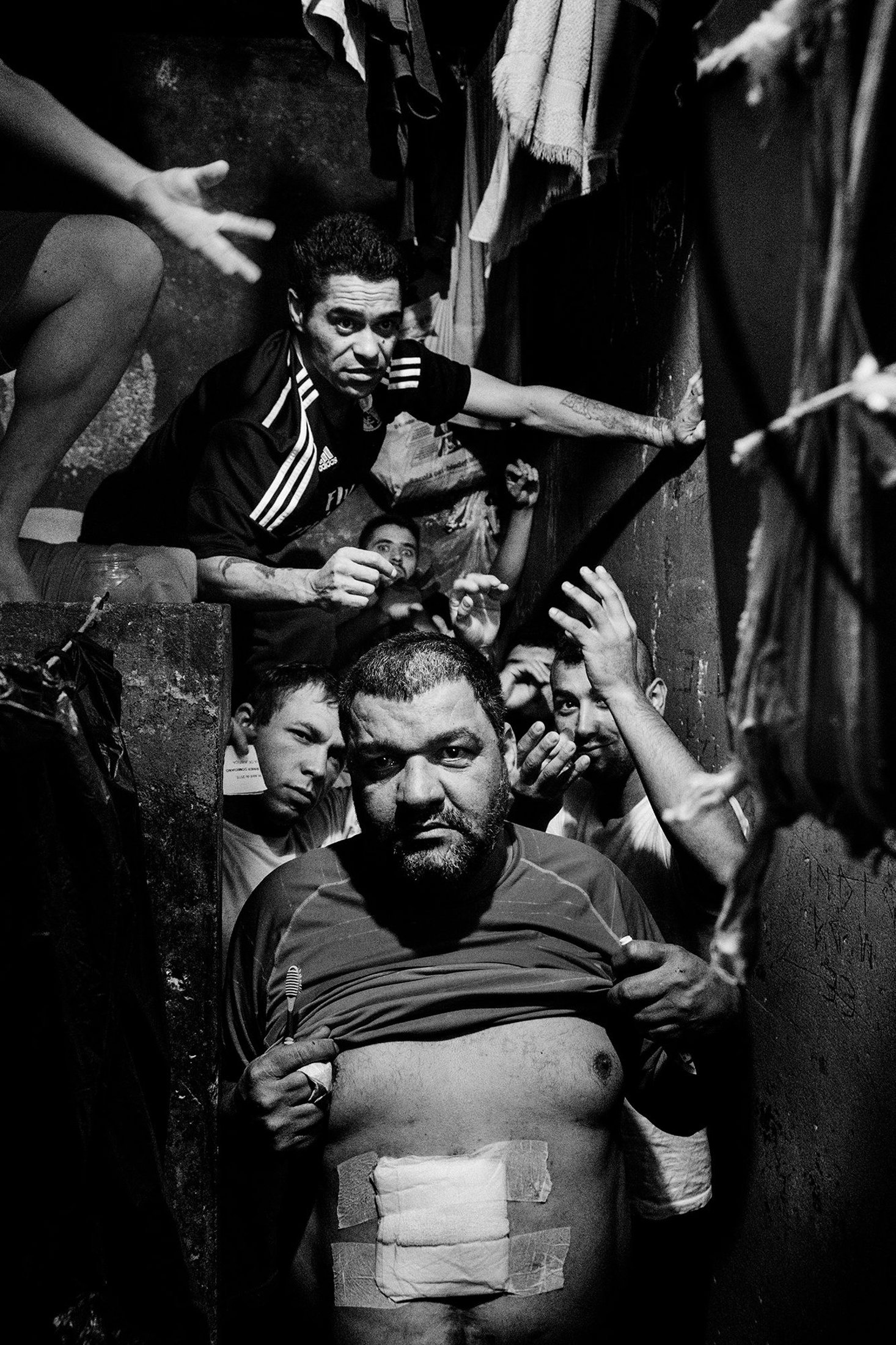The police imprisonment facility in 11 Distrito, Curitiba. The jail should work as a police custody area where prisoners are detained for short periods before being moved into bigger imprisonment facilities. Instead, the majority of inmates have been detained for more than a year and in one case, 117 inmates are detained in cells that were designed to hold a total of 20 people. © Tommaso Protti. Juror's Pick, Magnum Photography Awards 2016.
An overcrowded cell inside the triage facility of the Americano Penitentiary complex in Santa Izabel do Pará. 302 inmates share a space designed for 148 people. Cells designed to host 12 people end up containing more than 25 prisoners. © Tommaso Protti. Juror's Pick, Magnum Photography Awards 2016.
Severe overcrowding is one of the most serious problems plaguing Brazil's penal system. © Tommaso Protti. Juror's Pick, Magnum Photography Awards 2016.
Relatives of inmates detained inside the Cremacao police imprisonment facility in Belem, the capital of Pará state. The people above react after hearing the gun shots of a special operations police squad, who fired their weapons while suppressing a revolt inside the prison. The rebellion started due to the conditions of overcrowding inside the cells: 212 inmates shared a space designed for 92 people. © Tommaso Protti. Juror's Pick, Magnum Photography Awards 2016.
A man arrested for robbery is taken inside the imprisonment police facility of Altamira in the state of Para (Brazilian northeast). The Brazilian prison population had increased by 508% between 1990 to 2013. © Tommaso Protti. Juror's Pick, Magnum Photography Awards 2016.
Inmates protest against the conditions of overcrowding inside their cell in the police imprisonment facility 11 Distrito, Curitiba. © Tommaso Protti. Juror's Pick, Magnum Photography Awards 2016.
An overcrowded cell inside the police imprisonment facility 11 Distrito. The jail should work as a police custody area where prisoners are detained for short periods before to move into bigger imprisonment facilities. The prison detains 117 inmates in a space designed for 20 people, and some of whom had been there for over a year, and not a month or two as should be the case. © Tommaso Protti. Juror's Pick, Magnum Photography Awards 2016.
A crack cocaine addict suffers from withdrawal inside the police imprisonment facility of Altamira, in the state of Pará. The Brazilian prison population has increased by over 500% between 1990 to 2013, with a majority of crimes mainly connected to drug trafficking. © Tommaso Protti. Juror's Pick, Magnum Photography Awards 2016.
Dirty cells inside the police imprisonment facility 11 Distrito. © Tommaso Protti. Juror's Pick, Magnum Photography Awards 2016.
An overcrowded cell inside the Sao Joao’ police imprisonment facility in Curitiba. © Tommaso Protti. Juror's Pick, Magnum Photography Awards 2016.
An overcrowded cell inside the police imprisonment facility 11 Distrito. © Tommaso Protti. Juror's Pick, Magnum Photography Awards 2016.
Inmates have to establish night shifts as to who can sleep. This is due to the highly limited amount of space inside the cell. © Tommaso Protti. Juror's Pick, Magnum Photography Awards 2016.
An overcrowded cell inside the Sao Joao’ police imprisonment facility in Curitiba. © Tommaso Protti. Juror's Pick, Magnum Photography Awards 2016.
An overcrowded cell nside the detention center CRACAST in Castanhao. The prison is overcrowded and 317 inmates must share a space designed 156 people. © Tommaso Protti. Juror's Pick, Magnum Photography Awards 2016.
Inside the detention center CRACAST in Castanhao. The prison is overcrowded with 317 inmates sharing a space designed for 156 people. © Tommaso Protti. Juror's Pick, Magnum Photography Awards 2016.
 his project was singled out for distinction among the submissions to Magnum Photography Awards 2016 by juror David Kogan. Each juror selected one photographer—discover why this one stood out.
his project was singled out for distinction among the submissions to Magnum Photography Awards 2016 by juror David Kogan. Each juror selected one photographer—discover why this one stood out.



